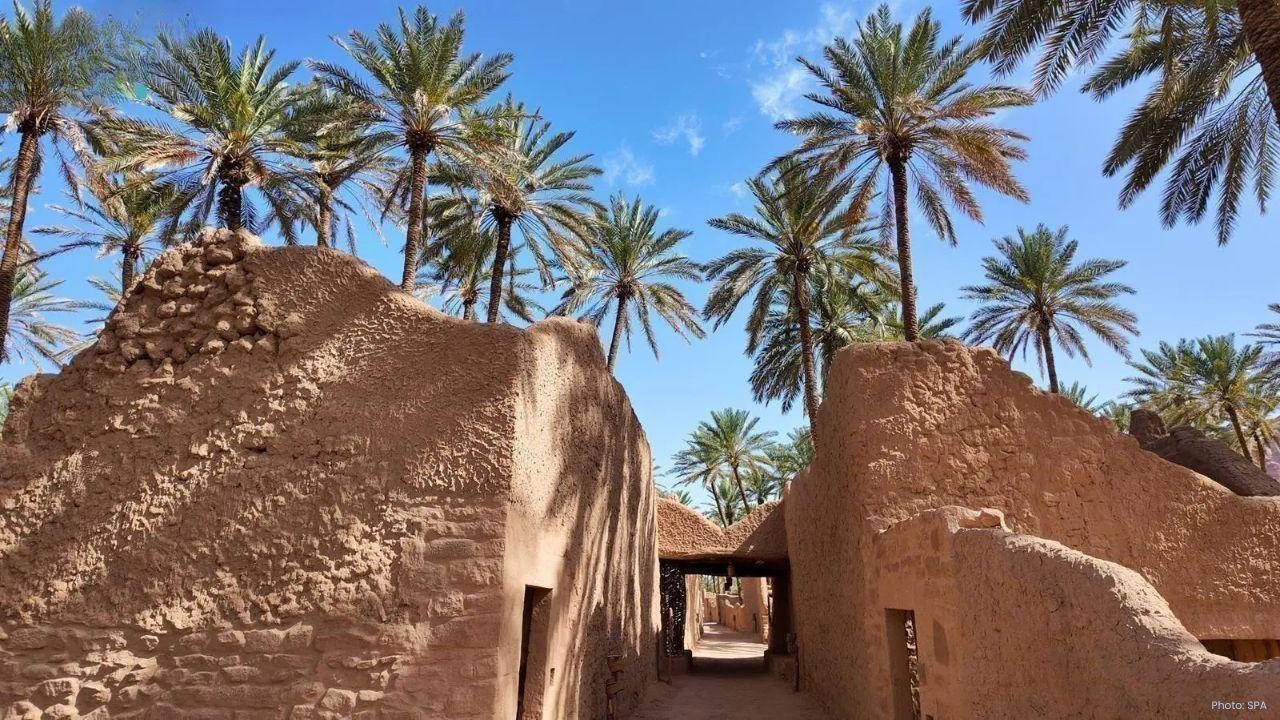
Post by : Zayd Kamal
Architecture has always been a reflection of the societies that create it. From the earliest human shelters to towering skyscrapers, buildings have evolved dramatically, shaped by technological advancements, cultural shifts, and changing social needs. Understanding The History of Architecture How Buildings Have Changed Over Time allows us to appreciate how structures serve not only as functional spaces but also as expressions of human creativity and innovation. This journey through time highlights the key architectural styles and movements that have defined different periods in history.
The earliest forms of architecture were simple shelters designed for protection. Early humans relied on natural materials like wood, stone, and animal hides to create rudimentary homes. The concept of permanent architecture began around 10,000 BCE with the development of farming societies, which led to the construction of more durable structures. Early buildings were primarily functional, offering shelter from the elements.
As civilizations began to flourish, architecture became more sophisticated. The ancient Egyptians, for instance, are known for their monumental stone structures, such as the Great Pyramids of Giza. These structures were not only tombs for pharaohs but also symbols of the power and divine nature of the rulers. Similarly, the Mesopotamians constructed ziggurats, massive step pyramids, to serve both religious and civic purposes.
The Greeks and Romans further advanced architecture with the introduction of columns, arches, and domes. Greek temples, like the Parthenon, showcased the beauty of symmetry and proportion, while Roman innovations in engineering allowed for the construction of grand public spaces such as the Colosseum and aqueducts.
The fall of the Roman Empire in the 5th century AD marked the beginning of the Middle Ages, a period characterized by religious influence on architecture. During this time, The History of Architecture How Buildings Have Changed Over Time took a dramatic turn with the rise of Gothic architecture.
Gothic architecture, which emerged in the 12th century, was defined by its use of pointed arches, ribbed vaults, and flying buttresses. These innovations allowed for taller, more expansive buildings with larger windows, often filled with intricate stained glass. The pinnacle of Gothic architecture was the construction of cathedrals like Notre-Dame de Paris and Chartres Cathedral. These grand structures were not only places of worship but also symbols of the power and wealth of the church.
In addition to religious buildings, castles and fortifications were a dominant feature of medieval architecture, designed to protect territories and serve as seats of power. Thick stone walls, narrow windows, and defensive features like moats and drawbridges became characteristic of this era.
The Renaissance, which began in the 14th century in Italy, marked a revival of interest in classical Greek and Roman architecture. Architects like Filippo Brunelleschi and Leon Battista Alberti sought to combine the elegance of ancient buildings with the growing advancements in engineering and mathematics. The History of Architecture How Buildings Have Changed Over Time can be seen in the design of structures such as the dome of St. Peter’s Basilica in Rome, designed by Michelangelo and completed in the 17th century.
Renaissance architecture emphasized symmetry, proportion, and the use of columns and arches. Palaces, villas, and public buildings were designed with grand facades, often featuring decorative elements such as sculptures and frescoes. This period also saw the development of urban planning, with architects designing entire city layouts that emphasized harmony and beauty.
In the 17th and 18th centuries, architecture took on a more dramatic and ornate style. The Baroque period, which began in Italy, was characterized by bold curves, intricate detailing, and the use of light and shadow to create dramatic effects. Buildings such as the Palace of Versailles in France and St. Peter’s Square in Rome exemplified the grandeur of Baroque architecture, which was often used by monarchs and the church to display their power.
The Rococo style, which followed Baroque architecture in the early 18th century, was even more elaborate. It featured delicate, flowing curves and intricate ornamentation. Rococo buildings were often smaller in scale but filled with elaborate interior designs, creating a sense of luxury and opulence.
The 19th century brought about the Industrial Revolution, which had a profound impact on architecture. New materials like steel, iron, and glass, along with advancements in engineering, allowed for the construction of larger, more complex buildings. One of the most iconic examples of this period is the Crystal Palace in London, which was constructed for the Great Exhibition of 1851. This innovative building used a glass-and-iron frame, demonstrating the potential of industrial materials.
As the 20th century began, modern architecture emerged, emphasizing function over ornamentation. Architects like Le Corbusier, Frank Lloyd Wright, and Ludwig Mies van der Rohe championed minimalist designs, open spaces, and the use of new materials like concrete and glass. The International Style, with its sleek lines and lack of decorative elements, became a defining feature of modern buildings, especially in urban settings. Skyscrapers, such as the Empire State Building in New York, became symbols of modernity and economic progress.
Today, architecture continues to evolve, with a strong focus on sustainability and innovation. Green building practices, such as the use of solar panels, energy-efficient materials, and eco-friendly designs, have become integral to modern architecture. The focus is not just on creating beautiful structures but also on designing buildings that are energy-efficient and have minimal environmental impact.
Advancements in technology, such as 3D printing and parametric design, are pushing the boundaries of what is possible in architecture. Buildings are becoming more dynamic and interactive, responding to the needs of the environment and the people who inhabit them.
The History of Architecture How Buildings Have Changed Over Time shows that architecture is not just about constructing buildings, but also about responding to the cultural, social, and technological challenges of each era. As we look to the future, architecture will continue to adapt, offering solutions that are not only aesthetically pleasing but also sustainable and practical for a rapidly changing world.
The History of Architecture How Buildings Have Changed Over Time takes readers on an engaging journey through the evolution of architecture. From the earliest shelters constructed by humans using simple materials to the modern skyscrapers of today, architecture has transformed in response to cultural, technological, and social shifts. Key periods explored include the ancient stone structures of Egypt and Greece, the Gothic cathedrals of the Middle Ages, the Renaissance's revival of classical styles, and the dramatic changes during the Industrial Revolution. The article also covers the minimalist modern architecture of the 20th century and today's focus on sustainability and innovation. Architecture continues to evolve as it adapts to future needs, blending beauty with functionality and environmental responsibility.
The information provided in this article is for general informational purposes only. The views and opinions expressed are those of the author and do not necessarily reflect the official policy or position of dxb news network. Readers are encouraged to conduct their own research and consult with professionals for specific advice.

China Eastern Resumes Shanghai-Delhi Flights After 5 Years
China Eastern Airlines restarts Shanghai-Delhi flights from Nov 9, marking a major step in India-Chi

UAE Triumphs Over Japan to Qualify for T20 World Cup 2026
UAE cricket team secures historic T20 World Cup 2026 spot with a strong win over Japan, marking thei

Fire Erupts at Dhaka Airport Cargo, Flights Temporarily Halted
A massive fire broke out in Dhaka airport's cargo area, halting flights. Firefighters battle blaze;

59 South Koreans Repatriated from Cambodia Over Online Scams
South Korea repatriates 59 nationals from Cambodia linked to online scams amid growing crackdown on

AlUla Marks Heritage Day with Living Traditions Revival
AlUla celebrated Heritage Day, showcasing timeless arts, crafts, and customs to keep its living trad

“No Kings” Protests US States Deploy National Guard Ahead of Rallies
National Guard troops activated as “No Kings” protests target Trump policies in over 2,500 US locati

Kohli, Rohit Return as India Gear Up for Australia ODIs
Virat Kohli and Rohit Sharma return to action as India take on Australia in a three-match ODI series

From Street Shawarmas to Sky Dining Dubai’s Food Adventure
Explore Dubai’s food wonders from sizzling street shawarmas to elegant sky dining where every flavo

7 Best International Destinations for Vegetarian Travellers Delicious & Travel Friendly
Discover 7 top international destinations for vegetarian travellers with delicious meals vibrant cul

Morning Habits of Highly Successful People Start Your Day the Smart Way
Discover the powerful morning habits of highly successful people and learn how starting your day rig

Beyond the Gym Dubai’s Outdoor Fitness Revolution on Beaches & Skylines
Explore Dubai’s outdoor fitness revolution on beaches and skylines blending health community and sce

AI in Dubai’s Luxury Salons Personalized Skincare Meets Technology
Discover how Dubai’s luxury salons use AI to create personalized skincare routines blending technolo

The $1 Million Secret Dubai’s Luxury Longevity Clinics and Personalized Wellness Revolution
Explore Dubai’s $1M longevity clinics offering luxury high tech treatments and personalized wellness

Pankaj Dheer The Timeless Villain Who Shaped Indian Television
Discover Pankaj Dheer’s legendary journey from iconic villain to timeless TV star inspiring generati

Best Whole Grains for Weight Loss Healthy Nutritious & Easy to Include
Discover the best whole grains for weight loss boost metabolism stay full longer and enjoy healthy n